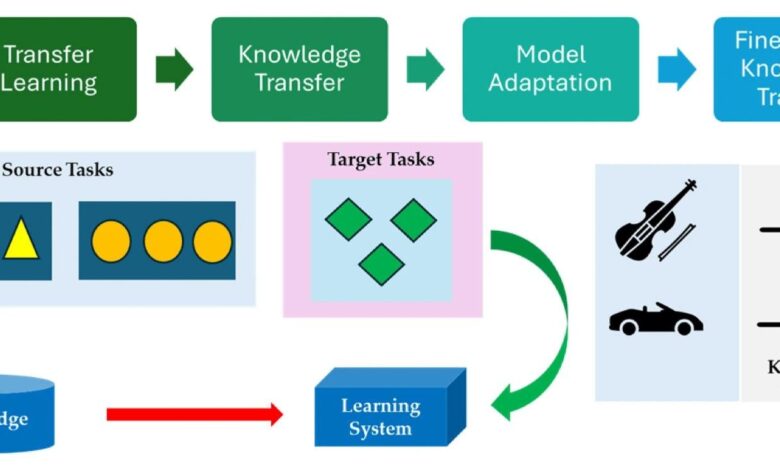Automation and Robotics for Environmental Sensing: A Review

In a recent review article published in the journal Applied Sciences, researchers explored the impact of automation on environmental sensing, focusing on advanced technologies that revolutionize data collection, analysis, and monitoring. They discussed the challenges and opportunities of using environmental sensor networks (ESNs), unmanned aerial systems (UAVs), robotics, and deep learning (DL) for various environmental sensing applications. Additionally, they highlighted the role of transfer learning and edge computing in enhancing the efficiency and accuracy of these technologies.
Background
Environmental sensing is the process of measuring and monitoring various aspects of the natural environment, such as air quality, water quality, soil quality, climate, vegetation, and wildlife. It is essential for understanding the state and dynamics of the environment, detecting and mitigating environmental hazards, and supporting sustainable development and conservation efforts.
However, traditional methods of environmental sensing often face limitations in terms of cost, coverage, scalability, reliability, and timeliness. Therefore, there is a need for innovative solutions that can overcome these challenges and provide high-quality, real-time, and comprehensive environmental data.
About the Research
In this review, the authors provided a comprehensive overview of emerging technologies facilitating automation in environmental sensing, including ESNs, UASs, robotics, and DL. They defined automation as the integration of hardware and software elements into modern analytical systems to minimize human intervention and ensure consistency.
The paper analyzed the advantages and disadvantages of each technology, along with their current and potential applications in various environmental fields. For example, the researchers discussed how UASs can be used for aerial monitoring of deforestation, while robotic systems can be employed for water quality measurements in hard-to-reach areas.
Additionally, they addressed the challenges associated with implementing these technologies, such as interoperability, calibration, communication, longevity, security, privacy, and ethics. Furthermore, they emphasized the importance of transfer learning and edge computing as techniques to enhance the performance and scalability of these automated environmental sensing systems.
Significance of Automation and Robotics
The review highlighted the main outcomes and contributions from existing literature on automation in environmental sensing. Some of the key results included:
- ESNs offered wireless networks of sensors capable of providing high-quality time-series data for environmental monitoring. However, they encountered challenges related to data integration, quality control, power consumption, and maintenance.
- UASs, especially unmanned aerial vehicles (UAVs), served as versatile and cost-effective platforms for environmental data collection, offering high spatial and temporal resolution. Despite their advantages, they faced limitations in regulatory compliance, flight endurance, payload capacity, and safety.
- Pollution monitoring faced challenges associated with high costs, driving the exploration of more cost-effective alternatives.
- Smart agriculture encountered hurdles in interoperability, data integration, and device lifespan in complex weather conditions. This prompted the need for more advanced technology.
- Robotics, especially underwater vehicles, played a crucial role in environmental data collection under challenging conditions, providing accurate and reliable data. However, they required sophisticated navigation, communication, and coordination systems.
- Edge computing and transfer learning contributed to mitigating challenges in environmental sensing, emphasizing the need for further work to enhance monitoring solutions.
- DL emerged as a powerful technique for environmental data analysis, enabling feature extraction, classification, segmentation, detection, and prediction. However, it required large and diverse datasets, computational resources, and interpretability.
Potential of Automation and Robotics
The authors explored the applications of automation and robotics in environmental sensing across various domains, including agriculture, pollution monitoring, disaster management, climate change, and ecology. These technologies hold immense potential to benefit the following fields:
- Agriculture: ESNs, UASs, robotics, and DL can revolutionize farming by enabling precision agriculture (optimizing crop production, monitoring soil and plant health), pest and disease management, and yield estimation.
- Pollution monitoring: They can be used for measuring and predicting air and water pollution levels, identifying pollution sources, evaluating impacts, and implementing real-time monitoring and mitigation strategies.
- Disaster management: UASs, robotics, and DL play a vital role in disaster preparedness by assessing risks, mapping affected areas, locating survivors, and delivering aid during disaster response and recovery efforts.
- Climate change: They can provide valuable data for observing and modeling climate variables, tracking greenhouse gas emissions, and evaluating mitigation and adaptation strategies.
- Ecology and conservation: These technologies can significantly enhance environmental understanding and conservation by enabling detailed mapping, exploration, and observation of natural phenomena.
Conclusion
The review summarized that automation in environmental sensing holds great promise and is rapidly advancing, offering significant benefits for environmental research and management. They also suggested several future directions for further research and development, including:
- Developing more robust, adaptive, and intelligent ESNs, UASs, and robotics systems capable of operating autonomously and collaboratively in complex and dynamic environments.
- Exploring advanced DL techniques like federated learning and self-supervised learning to leverage existing knowledge, distributed data, and unlabeled data for more effective environmental data analysis.
- Integrating edge computing with ESNs, UASs, robotics, and DL to enable faster, more efficient, and more secure data processing and decision-making at the edge of the network.
- Addressing the ethical, social, and legal implications of automation in environmental sensing, including issues related to data ownership, privacy, security, accountability, and public acceptance.
Journal Reference
Borah, S.S.; Khanal, A.; Sundaravadivel, P. Emerging Technologies for Automation in Environmental Sensing: Review. Appl. Sci. 2024, 14, 3531. https://doi.org/10.3390/app14083531, https://www.mdpi.com/2076-3417/14/8/3531.



